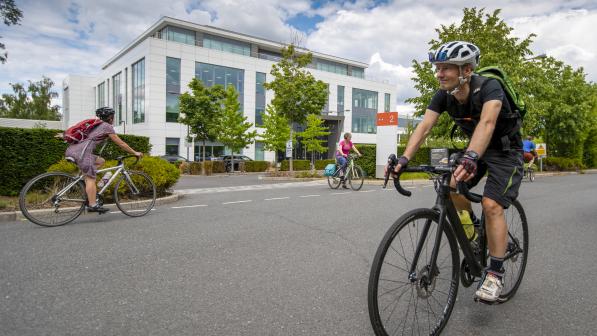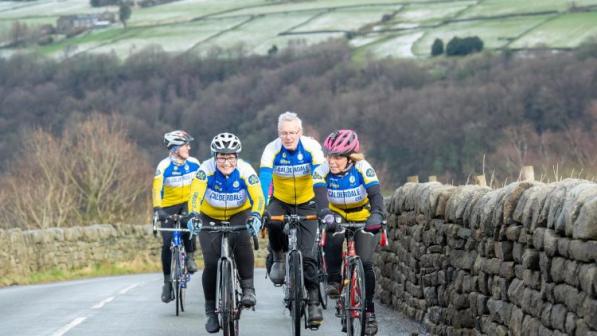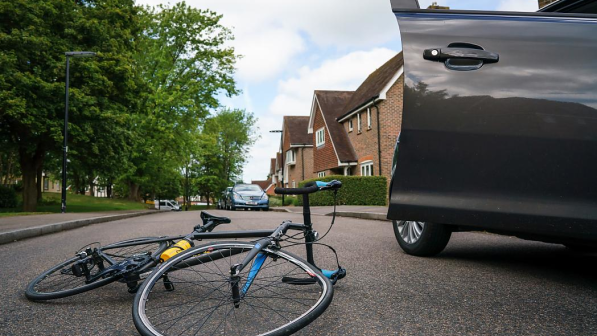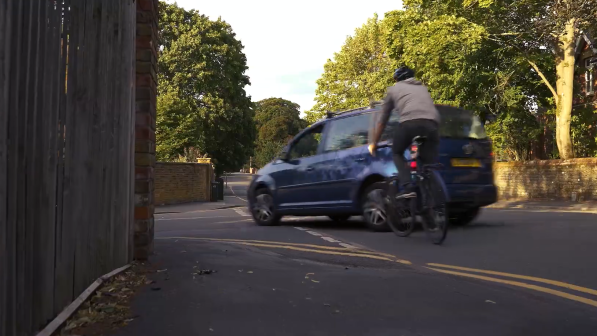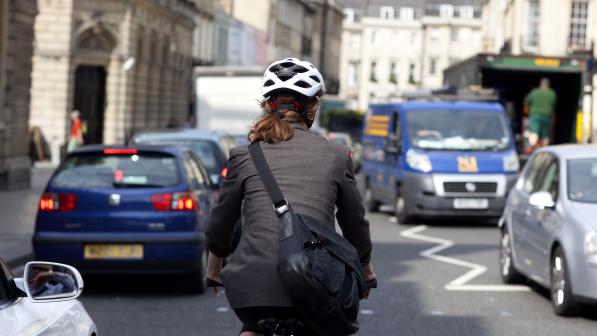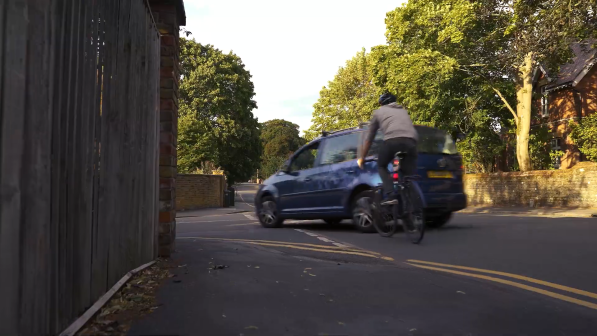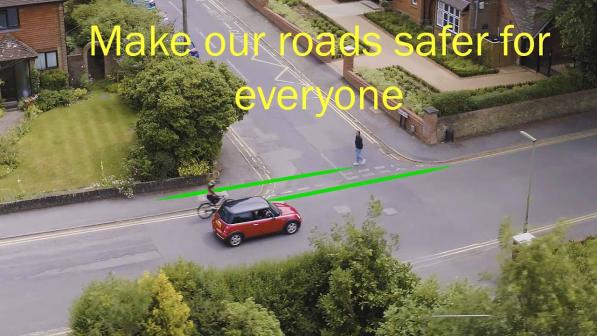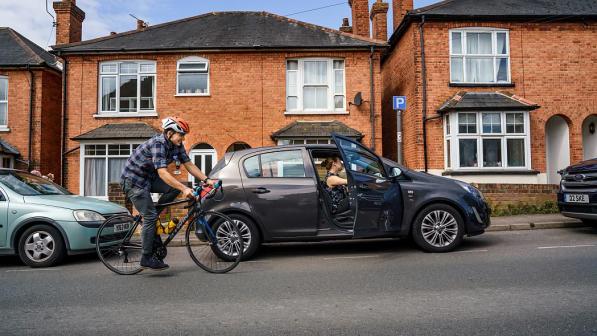Highway Code changes: Frequently asked questions

- What is the Highway Code?
- What is happening with the Highway Code?
- Does the Highway Code matter?
- Why is the Government reviewing the Highway Code now?
- What has Cycling UK done to influence the proposed changes?
- Is changing the Highway Code the only thing we need to do to improve safety for cyclists?
- Do we still need to change the Highway Code if we have better infrastructure?
- What happens after the Highway Code is changed?
- What are the key proposals in the new Highway Code?
- What is the Hierarchy of Responsibility?
- What are the proposals on junction priority?
- What are the proposals on overtaking cyclists?
- Is there advice to drivers on cyclists’ road positioning?
- Is there any advice to drivers on group riding?
- Is there anything about car dooring?
- What other changes affect cyclists?
- What can I do to make sure the new Highway Code is better for cyclists?
Q: What is the Highway Code?
The Highway Code (HC) applies in England, Scotland and Wales (GB). There is a separate HC in Northern Ireland (NI), which is based on the GB version.
There are 307 rules in the current HC.
Those saying ‘MUST /MUST NOT’ are mandatory legal requirements and breaching them is an offence. Those legal requirements were, however, created by statute, which the Government can’t change by simply amending the HC.
Other rules in the HC use advisory wording such as ‘SHOULD / SHOULD NOT’ or DO / DO NOT’. Failing to comply with those rules is not, in itself, a criminal offence, but may be used in court to decide whether a more general offence has been committed (e.g. ‘careless’ or ‘dangerous’ driving), or civil liability (whether someone is owed compensation for injury or property damages).
Q: What is happening with the Highway Code?
The Government launched a review of the HC last July, consulting on proposed changes to the HC in GB to improve safety for cyclists, pedestrians and horse riders (vulnerable road users – VRUs). The proposals all related to changes to the advisory rules, because as outlined above, to change the mandatory rules the Government would have to change the law.
The consultation ran until the 27 October and only rules that impact on the safety of VRUs were considered. On 28 July 2021, the Government announced that it would push ahead with all the proposed changes, representing a fantastic campaigning win for Cycling UK. The final wording of the new and changed rules is yet to be confirmed.
Q: Does the Highway Code matter?
It's sometimes suggested that where the rules are advisory, and not a legal requirement, that they don’t really matter because few people read the HC except when learning to drive.
However, clearer rules on the distance drivers should leave when overtaking cyclists, clarifying that cyclists are allowed to ride two abreast and that it might be safer for them to do so, explaining that they can filter through traffic and that it is sometimes advisable for them to ride in the primary position, are all needed. Too many drivers, and indeed some police officers, are unclear about the current rules, which are then either misquoted, misunderstood, or misapplied when enforcement decisions are made.
More importantly, the HC can and should set the framework for establishing which road users bear the greatest responsibility for the safety of others. That should be those who present the greatest risk. The proposal to include such a 'hierarchy of responsibility' within the HC is one of the most important changes for all VRUs (see question 10).
Q: Why is the Government reviewing the Highway Code now?
Cycling UK has been trying to change the HC since the last big review back in 2007, including in recent years through our Too Close for Comfort, Dutch Reach and Cycle safety: make it simple (CSMiS) campaigns.
In our submissions to the Department for Transport (DfT) as part of the CSMiS campaign (pages 87 -97), we outlined why the Code had to be changed, including three specific recommendations that:
- The rules on overtaking cyclists should be made clearer, to include a minimum distance guideline.
- The rules should contain clearer guidance about opening car doors safely, including advice on the ‘Dutch Reach’.
- New rules on junction priority should be introduced to improve safety and convenience for pedestrians and cyclists at junctions.
Thanks to over 10,000 members and supporters who wrote to the DfT in support of these changes, we managed to secure a government commitment in 2018 to review the HC Code to improve safety for VRUs including junction priority and overtaking rules (pages 31-32).
Q: What has Cycling UK done to influence the proposed changes?
After committing to review the HC in November 2018, the DfT has been consulting with various stakeholders about the consultation proposals, with Cycling UK’s Policy Director Roger Geffen, Joe Irving (former CEO of Living Streets) and highway design expert Phil Jones feeding into that process for over a year.
Whilst we haven’t been able to get every suggestion we made into the proposals, much of what we’ve pushed for has been included in the consultation draft. But we needed to make sure the good things remain in the final version and aren’t watered down, which is why we asked our supporters to respond to the review using our online action. An incredible 16,500 people took park, our highest campaign response ever, and we're delighted that the Government has now committed to pushing ahead with the changes, although we're still to see the final wording.
Q: Is changing the Highway Code the only thing we need to do to improve safety for cyclists?
Absolutely not, but it is important, and is something you can influence now through the consultation.There are, however, some problems with our road traffic laws and enforcement which can’t be fixed by changing the HC, which is why we’ve long called for a full review of road traffic offences and penalties with greater use of bans to tackle irresponsible driving.
Even if we change the legal framework and the HC, there still needs to be effective enforcement, which is why we’ve campaigned for roads policing to be given a much higher priority. Fortunately, there’s an opportunity to make sure this happens in England and Wales, as the DfT, Home Office and National Police Chief’s Council are conducting a review of roads policing, with a call for evidence to be submitted by 5 October. Cycling UK will be responding to this and engaging with members and supporters over the summer.
Q: Do we still need to change the Highway Code if we have better infrastructure?
Campaigning to transform our streets with better cycling infrastructure across the UK is an ongoing and core campaign for Cycling UK.
But, even if investment in active travel is doubled overnight in every nation within the UK, it will be many years before high quality fully connected networks of separated cycle lanes extend everywhere, beyond the largest urban areas. It's therefore important to address safety and user behaver on the road network we currently have, whilst pushing to improve that network with more separated lanes and better infrastructure. These things are not mutually exclusive.
Many of the changes to the HC also relate to cycling infrastructure, including changes to junction priority when vehicles turn left across cycle lanes and tracks.
Q: What happens after the Highway Code is changed?
Whilst changing the HC is important, we also need to make sure that people are aware of those changes.
Cycling UK cannot do that on our own, and there will need to be some public awareness work from the Government. We are, however, trying to communicate and explain the proposed changes, including through our most recent film about priority at junctions, and why a simple rule change is needed.
Q: What are the key proposals in the new Highway Code?
There’s numerous changes proposed to the Code, which we’ve summarised in an article on what you can do to improve it and in a 10 key changes document.
We’ll outline all of these in detail in the coming weeks on our campaign page, but there’s three which we think are crucially important for people who cycle – or might cycle if the roads looked and seemed safer to them. These are changes to:
- Rule 1 - Hierarchy of responsibility / user
- Rules 2, 3 & 76 - Junction priority
- Rule 163 - Overtaking rules
Q: What is the Hierarchy of Responsibility?
The proposal is to introduce the concept of a 'hierarchy of user', putting road users most at risk in the event of a collision at the top of the hierarchy. That’s pedestrians, in particular children, older adults and disabled people, followed by cyclists and horse riders, and then motorcyclists. It wouldn’t remove the need for all users to behave responsibly or give priority to pedestrians and cyclists in every situation, but it would ensure that their needs were considered first.
It would mean that people in charge of the largest vehicles, with the potential to cause the most harm in a collision, bore the greatest responsibility to take care and reduce the danger they pose to others. So, a lorry driver would have a greater responsibility to those driving a car or motorcycle, and likewise people cycling would have a greater responsibility than pedestrians.
Cycling UK wanted this rule to be framed as a “hierarchy of responsibility”, rather than a “hierarchy of user”, but nevertheless support the rule change because it would establish the principle that road users who present the greatest risk to others should bear greater responsibility. We’ll also be pressing the DfT to frame this as a hierarchy of responsibility rather than user.
Q: What are the proposals on junction priority?
These would introduce an underlying principle that vehicles turning at unsignalised junctions should give way to pedestrians or cyclists going straight ahead across their path, unless traffic signs, signals or markings say otherwise. The person going straight ahead would have right of way over the person turning left. This should reduce ‘left hook’ collisions and make it easier to maintain cycle track priority at junctions.
We’ve made a film that demonstrates why this is so important, and simple to fix
The changes proposed reflect the concept of a hierarchy principle in rule 1, with cyclists also having to give way to pedestrians going straight ahead as they turn left.
Q: What are the proposals on overtaking cyclists?
The old rule advised drivers to give cyclists at least as much room as they would when overtaking a car, without further reference to what that was. The new rule advises that, as a guide, this would mean leaving:
- a minimum distance of 1.5 metres at speeds under 30 mph.
- a minimum distance of 2.0 metres at speeds over 30 mph.
- for a large vehicle, a minimum distance of 2.0 metres in all conditions.
- more space when overtaking in bad weather (including high winds) and at night.
The new rule would advise that cyclists are permitted to filter through traffic, specifically confirming that cyclists may overtake slower moving or stationary traffic on their right or left, including at the approach to junctions, but that they’re advised to exercise caution when doing so.
Q: Is there advice to drivers on cyclists’ road positioning?
Yes, the old HC rules didn’t mention road positioning, so many drivers wrongly assumed that cyclists should ride close to the kerb.
The amended rule 72 refers to two basic road positions cyclists should adopt, depending on the situation, which many cyclists will recognise as the ‘primary’ and ‘secondary’ positions. It would advise cyclists to ride in the centre of the lane, to make themselves as clearly visible as possible (primary):
- on quiet roads or streets, moving over to the left if a faster vehicle comes up behind them, but only if they can do so safely – and it’s up to the cyclist to determine whether that’s safe.
- at the approach to junctions or where the road narrows, where it would be unsafe for drivers to overtake them.
The proposed rule 72 advice to cyclists is then outlined to drivers within a revised rule 213, explaining the circumstances in which and why cyclists may sometimes ride in the centre of the lane, rather than towards the side of the road, and that drivers should allow them to do so for their (the cyclists’) own safety.
Q: Is there any advice to drivers on group riding?
Yes, the old rule stated that cyclists should never ride more than two abreast, and ride in single file on narrow or busy roads and when riding round bends. It was often misquoted to suggest that cyclists either shouldn’t be riding two abreast or had to single out to allow drivers to overtake. The new proposals delete that wording and replace it with advice simply to ride in single file when drivers wish to overtake, and it is safe to let them do so.
The new advice would also confirm what people who cycle in groups have always known, but which wasn’t previously reflected in the HC rules, namely that when riding in larger groups on narrow lanes it is sometimes safer to ride two abreast.
Q: Is there anything about car dooring?
Yes, the new rule would advise people to open car doors using the hand on the opposite side to the door they are opening, so you would use your left hand to open the driver’s door on your right hand side. This technique, known as the Dutch Reach, makes you turn your head to look over your shoulder before opening the door, and should reduce the number of cyclists injured when someone opens a car door without looking.
Q: What other changes affect cyclists?
As well as the six specific changes we’ve outlined, there are also proposals to change four other rules which are important and that Cycling UK support, namely:
- Rule 140 – Cycle lanes and cycle tracks.
- Rule 151 – Allowing pedestrians and cyclists to cross in front in slow moving traffic.
- Rule 178 – Advanced stop lines.
- Rule 186 – Drivers to give priority to cyclists at roundabouts.
A summary of those changes can be found in our 10 key changes document
Q: What can I do to make sure the new Highway Code is better for cyclists?
After our biggest ever campaign response, we're delighted that the Government has indicated it will push ahead with the proposed changes to make the HC safer for cyclists.
There’s still more to be done to finalise the wording of the new rules and to ensure the public understand the changes, but this brilliant result proves that our campaigning makes a real difference to cyclists’ safety when we work together: thank you.
But we couldn’t do any of this without our members, who fund our campaign work and enable us to achieve so much.
Whether it’s our campaign to review the Highway Code, our work with police to tackle dangerous overtaking, our campaigning for cycling infrastructure, or any of our other campaigns, it’s only possible thanks to our members and supporters.
If you want to do more to help us continue this vital campaigning work, and you're not already a member, please consider joining Cycling UK today.
